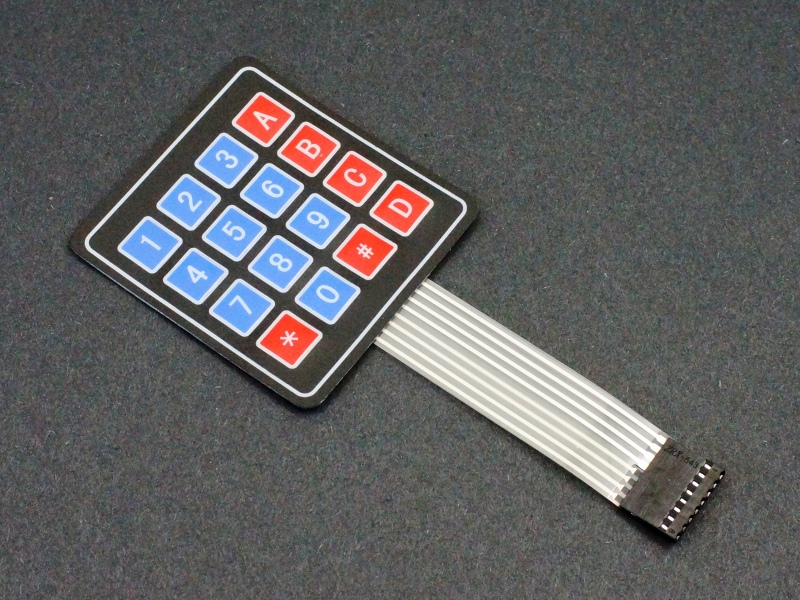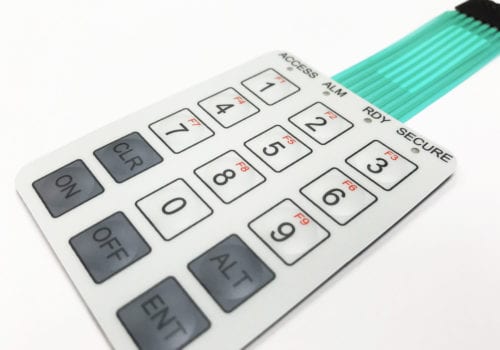Ensuring Quality and Longevity with Membrane Switches in Electronics
Ensuring Quality and Longevity with Membrane Switches in Electronics
Blog Article
Comprehending the Significance of Membrane Switches in Customer Interfaces
Membrane buttons are integral elements in the style of efficient customer interfaces, facilitating not only performance but likewise boosting visual appeal and user interaction. As we check out the various advantages and future patterns linked with Membrane technology, it ends up being clear that these switches are more than just elements; they represent a convergence of advancement and usefulness.
What Are Membrane Buttons?

The spacer layer, which contains adhesive homes, enables the splitting up of the circuit layer from the overlay, making sure that the switch remains in a non-activated state till pressed. When stress is used to the overlay, it compresses the spacer layer, connecting the space and completing the circuit in the underlying layer. This design not just minimizes the physical area required for typical mechanical buttons however also boosts the toughness of the gadget, as Membrane buttons are typically immune to dirt, moisture, and various other ecological factors.
Generally discovered in applications ranging from customer electronics to clinical gadgets, Membrane buttons are essential to modern innovation, supplying a reliable and easy to use interface that aligns with modern design demands.
Benefits of Membrane Buttons
While countless button technologies exist, Membrane Switches offer unique benefits that make them particularly desirable in numerous applications. One of the key benefits of Membrane buttons is their compact style, which allows for space-saving applications in tools where property is restricted. Their slim profile not only boosts aesthetic appeal however additionally helps with light-weight construction.
One more substantial benefit is their resistance to environmental aspects. Membrane buttons are usually secured versus moisture, dust, and pollutants, making them excellent for use popular atmospheres, such as clinical tools and industrial devices. This toughness expands the lifespan of the switch, decreasing upkeep expenses and boosting integrity.
Moreover, Membrane switches can be customized to meet particular style demands, including one-of-a-kind graphics and shades that boost customer interaction. Their responsive feedback options can also be tailored to provide a satisfying user experience. Additionally, Membrane buttons are cost-efficient, specifically in high-volume applications, as they can be generated successfully.
Applications in Numerous Industries

In the consumer electronics field, Membrane buttons are common in devices such as microwaves, cleaning makers, and push-button controls. Their tactile comments and aesthetic alternatives improve user experience while supplying a smooth, modern-day look. In addition, vehicle manufacturers make use of Membrane buttons in dashboard controls and infomercial systems, where area is restricted, and individual engagement is important.
Furthermore, the industrial market leverages Membrane switches in control panels for equipment and devices, allowing for user-friendly operation in commonly severe environments. Their resistance to chemicals and wetness guarantees durability and integrity in these applications. In general, the flexibility of Membrane Switches contributes significantly to their extensive usage, making them important in different technological domain names.
Layout Factors To Consider for Membrane Switches

When designing Membrane switches, a number of key factors to consider should be taken into account to guarantee optimum functionality and user experience. First of all, the option of products is essential; selecting durable, premium substratums can improve the button's durability and resistance to ecological aspects such as wetness and temperature level changes.
Secondly, the design of the graphic overlay need to focus on clearness and simplicity of use. Icons and message have to be readable, and the design ought to help with intuitive communication (membrane switches). In addition, tactile comments is important; incorporating a responsive dome or various other mechanisms can enhance the customer experience by supplying physical confirmation of activation
Another vital aspect is the switch's electrical efficiency. Designers must make certain that the conductive traces are appropriately developed to minimize resistance and prevent signal interference. This entails examining the required actuation pressure and making sure compatibility with the electronic parts they will user interface with.

Future Patterns in Membrane Innovation
As modern technology continues to breakthrough, Membrane buttons are positioned to develop significantly, driven by advancements in products and manufacturing methods. One emerging pattern is the unification of advanced materials, such as versatile substratums and conductive inks, which enhance toughness and lower the overall weight of Membrane buttons. These products not only enhance the responsive feedback but likewise permit the design of switches that can stand up to harsher ecological problems.
Additionally, the combination of touch-sensitive modern technologies is changing traditional Membrane Switches into more interactive individual interfaces. Capacitive touch sensing units installed within Membrane switch panels can provide a much more instinctive and receptive user experience, aligning with the home growing demand for sleek, modern styles in consumer electronics.
Furthermore, improvements in printing methods, such as electronic and 3D printing, make it possible for quick prototyping and modification of Membrane buttons. This versatility enables makers to react quicker to market needs and consumer preferences.
Finally, sustainability is becoming a significant focus, with manufacturers exploring eco-friendly products and procedures. As these fads unravel, the future of Membrane technology promises boosted capability, aesthetic appeal, and environmental duty, strengthening their function in sophisticated user interfaces throughout numerous markets.
Conclusion
In conclusion, Membrane Switches represent view publisher site an essential element in the layout of user interfaces, incorporating functionality with visual flexibility. As improvements in modern technology continue, the advancement of Membrane switches is anticipated to further fine-tune customer interfaces, driving innovation and enhancing use in an increasingly complicated technical landscape.
Membrane switches are important parts in the design of efficient customer interfaces, facilitating not only performance yet also enhancing visual allure and customer interaction.Membrane Switches serve as a crucial part in various user interfaces, assisting in a smooth communication in between users and electronic gadgets.While many button modern technologies exist, Membrane Switches deal distinct advantages that make them my latest blog post particularly desirable in different applications.Additionally, Membrane buttons can be tailored to fulfill details layout needs, incorporating unique graphics and colors that enhance user interaction.In conclusion, Membrane Switches stand for an essential part in the layout of customer interfaces, incorporating capability with visual adaptability.
Report this page